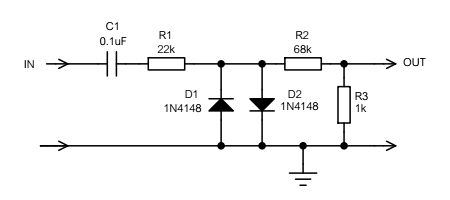doncarlosalbatros
Full Member level 2
As a stage of a circuit I have 0...5V amplitude pulse train coming from the output of a 74hc74.
The pulse train's frequency varies from 50Hz upto 1kHz.
I want pulse train to be converted to a -2.5V to +2.5V squarewave for at any freq. between 50Hz to 1kHz.
My aim is, after I obtain the +/-2.5V square wave, I will scale it to a +-10mV square wave by a voltage divider.
I will send this to a smartphone mic jack.
I hesitate to use a blocking cap because of two reasons:
1-) The frequency of the pulse to be converted is not fixed so a fixed cap may not work in desired freq. range
2-) The cap might interact with the inner circuitry(input impedance of the smartphone pre-amp)
So I was thinking there might be an IC solution to convert 0..5V pulse to +/-2.5V square wave(or any amplitude square wave). How can I achieve that? A circuit suggestion would help a lot.
The pulse train's frequency varies from 50Hz upto 1kHz.
I want pulse train to be converted to a -2.5V to +2.5V squarewave for at any freq. between 50Hz to 1kHz.
My aim is, after I obtain the +/-2.5V square wave, I will scale it to a +-10mV square wave by a voltage divider.
I will send this to a smartphone mic jack.
I hesitate to use a blocking cap because of two reasons:
1-) The frequency of the pulse to be converted is not fixed so a fixed cap may not work in desired freq. range
2-) The cap might interact with the inner circuitry(input impedance of the smartphone pre-amp)
So I was thinking there might be an IC solution to convert 0..5V pulse to +/-2.5V square wave(or any amplitude square wave). How can I achieve that? A circuit suggestion would help a lot.
